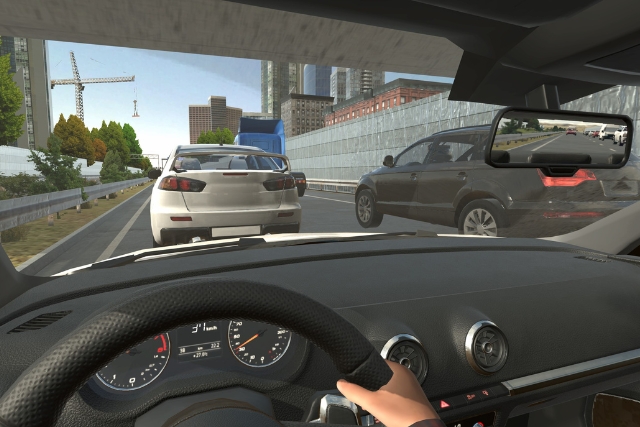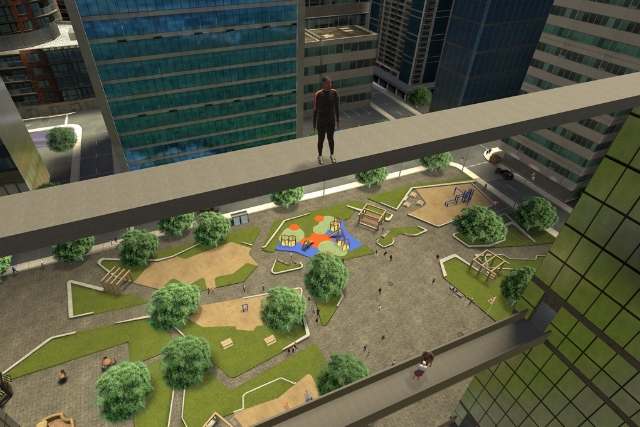Why such efficacy ?
1. Immersion
The user will be immersed in environments designed to recreate anxiety-inducing driving situations from everyday life.
2. Cognitive restructuring
They will unlearn negative reactions, such as catastrophic thoughts (“I’m going to lose control”), and rebuild positive thinking patterns (“I can do it”).
3. Repetition
Through repeated exposures, these patterns will become quickly and permanently ingrained in your mental functioning.
4. Progressiveness
The gradual increase in the difficulty of the environments will allow the user to progressively desensitize to the anxiety experienced and regain confidence in their abilities.
5. Personalization
With Artificial Intelligence, they will be supported and encouraged in a personalized way throughout the exposures.
Receive the C2Care method for free, combining Artificial Intelligence and Virtual Reality !
The AI revolution !
The different driving situations !
Highway
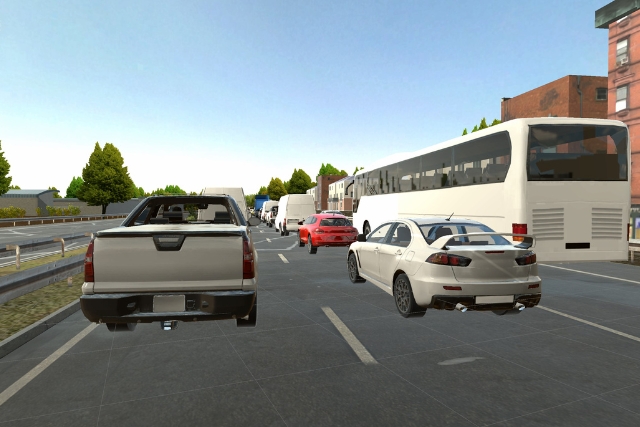
Highway
The highway is a real source of anxiety for individuals suffering from maxophobia. The user will be able to gradually increase the difficulty of the exposure by adjusting several parameters such as traffic density, nighttime conditions, or weather.
Progressively and safely, the user will become accustomed to different traffic conditions, allowing them to regain smooth and calm driving.
Tunnel
The tunnel is often a major source of concern for individuals suffering from driving anxiety. In this environment, it will be possible to drive through various tunnel configurations: short, long, large, small, with or without traffic, or even at night!
The user will be able to work on their fear of driving in an enclosed space, where escape seems impossible. Treating maxophobia in tunnels helps reduce anxiety and overcome the fear of driving in these specific situations.
Tunnel
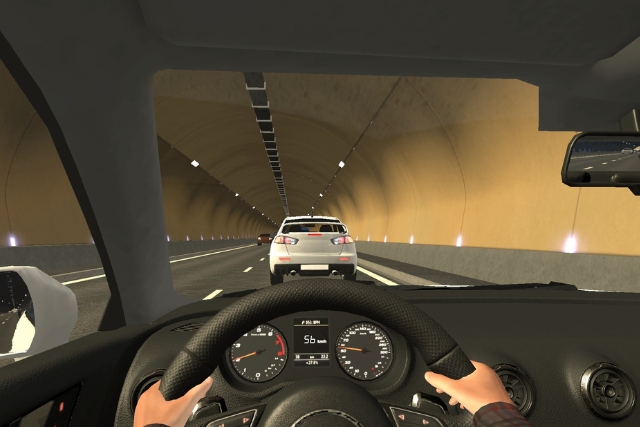
City
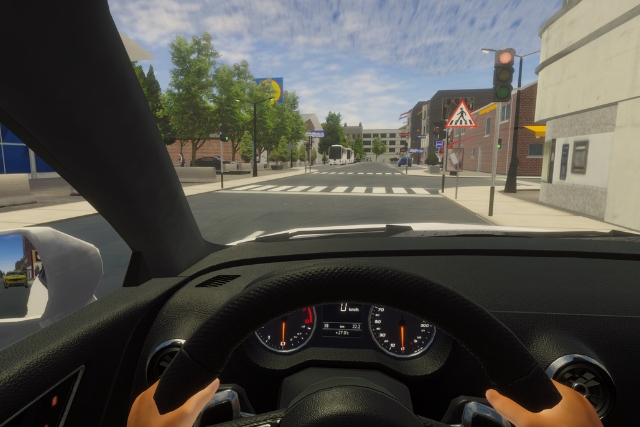
City
City driving can quickly become a source of anxiety due to the many situations it can create: traffic signals, red lights, store windows, heavy traffic, pedestrians, and close proximity to other vehicles.
The virtual city allows you to immerse yourself in an interactive environment and experience the reality of driving in the city: red lights, sound stimuli, pedestrians, right-of-way crossings… Treating amaxophobia in urban environments helps overcome the fear of driving in the city.
Bridge
Often linked to the fear of heights, driving anxiety can also occur on bridges. The sight of the void, along with the possibilities it creates, such as the risk of falling, can generate significant anxiety.
With virtual reality, the user will be able to experience different stages of crossing a bridge : short, long, small, single or dual-lane, as well as different weather conditions. Treating maxophobia on bridges helps reduce the fear of driving in these specific situations.
Bridge
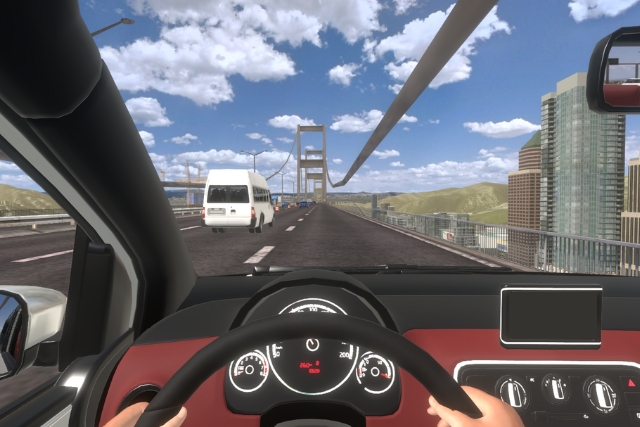
Mountain

Mountain
The mountains are often a significant source of anxiety for individuals suffering from maxophobia. Narrow, winding roads, sharp turns, limited visibility, the proximity of the void, and large vehicles that may force maneuvers perceived as dangerous.
Exposure to this environment through virtual reality will help you stop avoiding these settings. Virtual reality will allow for various types of mountain roads, and through gradual exposure, the user will be able to drive on these complex roads calmly again.
Lives changed thanks to our method.
Feel free to customize your exposures for a fully immersive experience !
You will be able to customize each environment by adjusting different parameters to suit your specific needs :
Vehicles: The environments will feature not only various types of cars but also vans, trucks, buses, and motorcycles! This customization allows you to focus on specific vehicles that trigger high anxiety.
Obstacles: The environments contain different types of obstacles. An accident may be on the side of the road, an ambulance may be parked, or there could be construction zones. These obstacles enhance the sense of presence, increasing the realism of the environments.
Weather: Scenes can take place under a clear blue sky, heavy rain, foggy conditions, or at night. Certain intense anxieties are often linked to specific driving conditions.
They testify to the effectiveness of C2Care !

Camille - User
I was afraid of others and myself. I decided to try the virtual reality solution which seems to be a good alternative to start with. Thanks to my psychologist’s follow-up, I am able to understand my fear better and control my anxiety.

Dr Bouchard - Psychologist
I think it’s an extraordinary opportunity for patients, people who suffer from these disorders to finally have access to treatments that we can dose to tame our fears.

Emilie - User
I was unable to get back behind the wheel! I lived with this fear for a long time. I started therapy at home and my psychologist helps me to face my fears and confront them. I am gradually regaining confidence and I am learning to manage my anxiety.
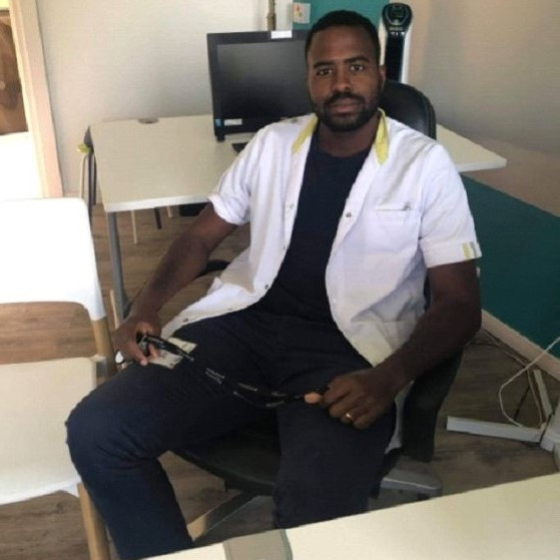
Jordan Fannis - Psychologist
I saw in the field what it brings to my patients, satisfaction, and then with a little bit of gamification, we enjoy going to work. It creates a kind of connection between my patients and me.

Anatolia - User
Very, very happy with this adventure, which was offered to me by my dad. I was finally able to regain my self-confidence, and above all I came out of the vicious circle in which I had fallen. Today I regain my independence.

Dr Redwan - Psychiatrist
The advantage is that you can precisely control the virtual environment, adjust the stimuli, adapt to the needs of the patient. There is the notion of safety that is very important, which can help them to take a step forward because they feel safer to face their fears.
Do you need further information or have any specific questions ?
Our environments in image









